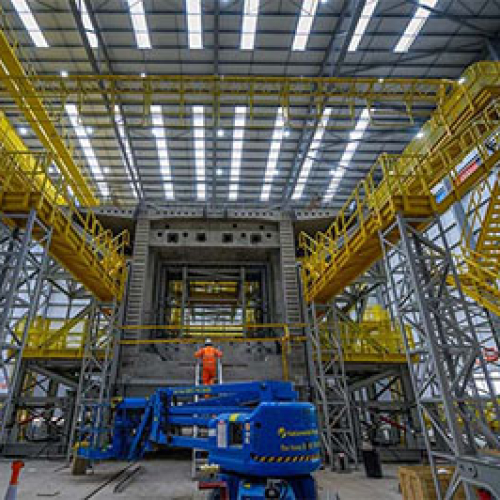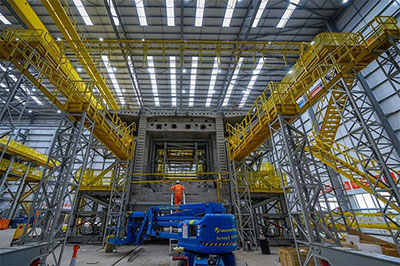HS2 opens huge new factory as work ramps up on UK’s longest railway bridge
Work on the UK’s longest railway bridge ramped up this week as HS2 began production of 1,000 enormous concrete segments that will form the deck of the Colne Valley Viaduct.


Stretching for 2.1 miles (3.4km) across a series of lakes and waterways just outside London, the viaduct will carry high-speed trains as part of the HS2 project, designed to improve rail links between London, Birmingham and North, boost the economy and provide a low carbon alternative to car and air travel.
The huge deck segments – which weigh up to 140 tonnes – are being made on site at a temporary factory built specifically for the project. The mammoth 100m long building, which is visible from the M25, has an internal volume of 105,000 cubic metres – making it larger than the Royal Albert Hall.
HS2 Project Client, David Emms said:
“We’re already making strong progress on the Colne Valley Viaduct – sinking the foundations, building the first piers, and now starting production at the new modular viaduct factory. Once complete, this iconic structure will carry trains at up to 200mph – improving connections across the UK, freeing up rail capacity and offering passengers low carbon travel options.
“It’s great to see how much progress has been made and I look forward to seeing work on assembling the deck structure later this year.”
Every segment will be a slightly different shape depending on where it fits into the viaduct and the modular approach was chosen to ensure quality, safety and efficiency in production and to avoid bringing them in by road.
At the peak of construction, around 12 segments – each the size of a double-decker bus - will be cast every week using a ‘match-casting’ technique. This approach - where each segment is poured against the previous one - will ensure the whole arch fits perfectly when reassembled on site.
The huge project is being led by engineers from HS2’s main works contractor Align JV – a team made up of Bouygues Travaux Publics, Sir Robert McAlpine, and VolkerFitzpatrick.
Once construction is complete, the factory and surrounding buildings will be removed and the whole area between the viaduct and the Chiltern tunnel will be transformed into an area of chalk grassland and woodland as part of HS2’s ‘green corridor’ project.